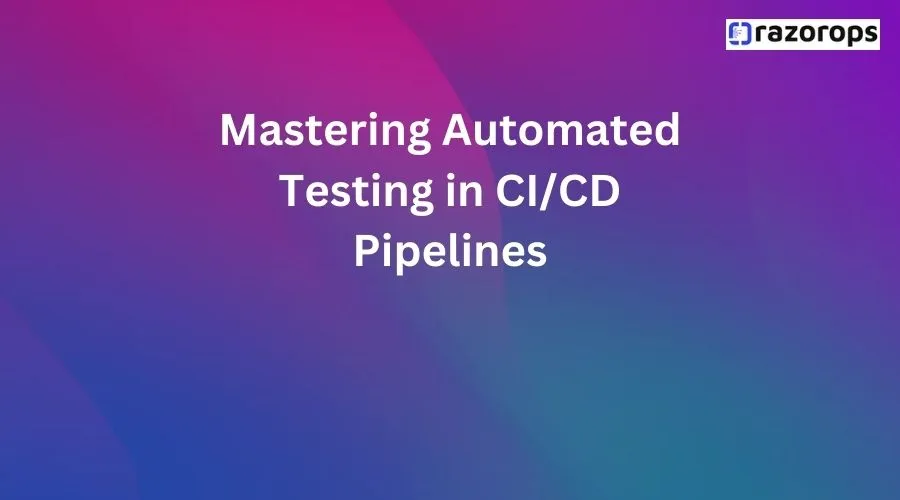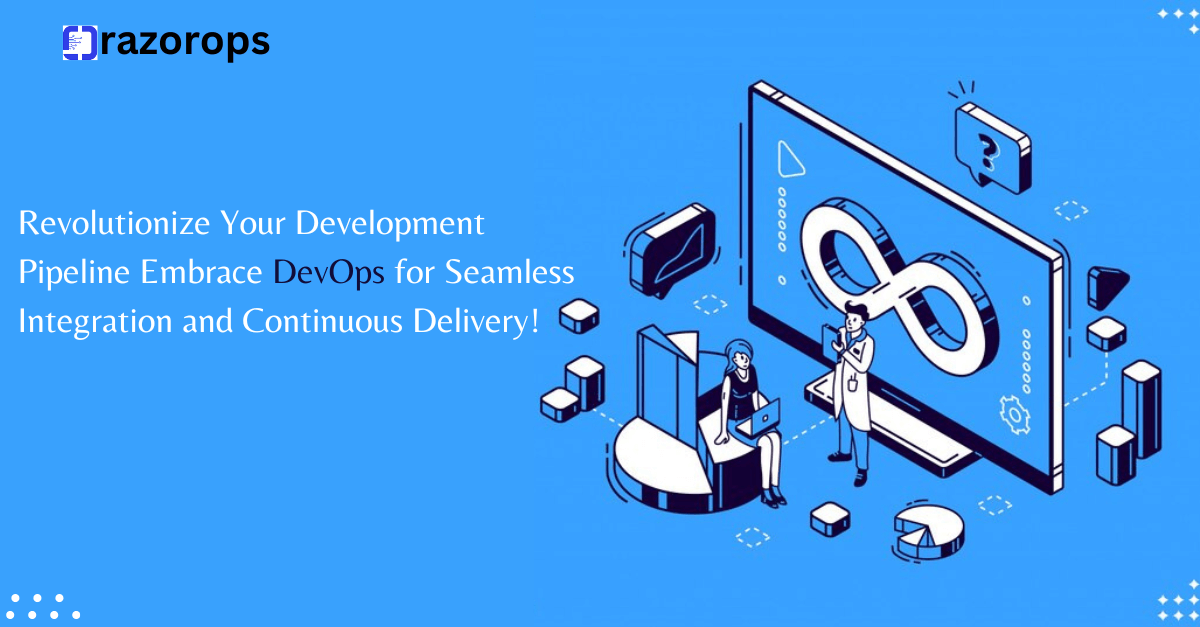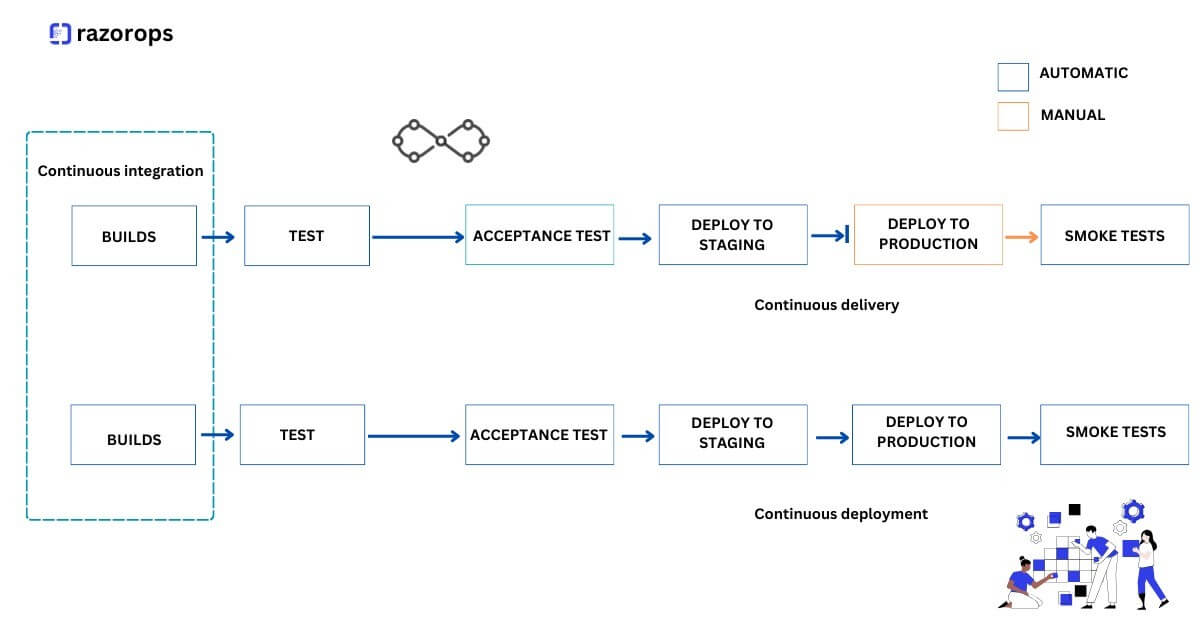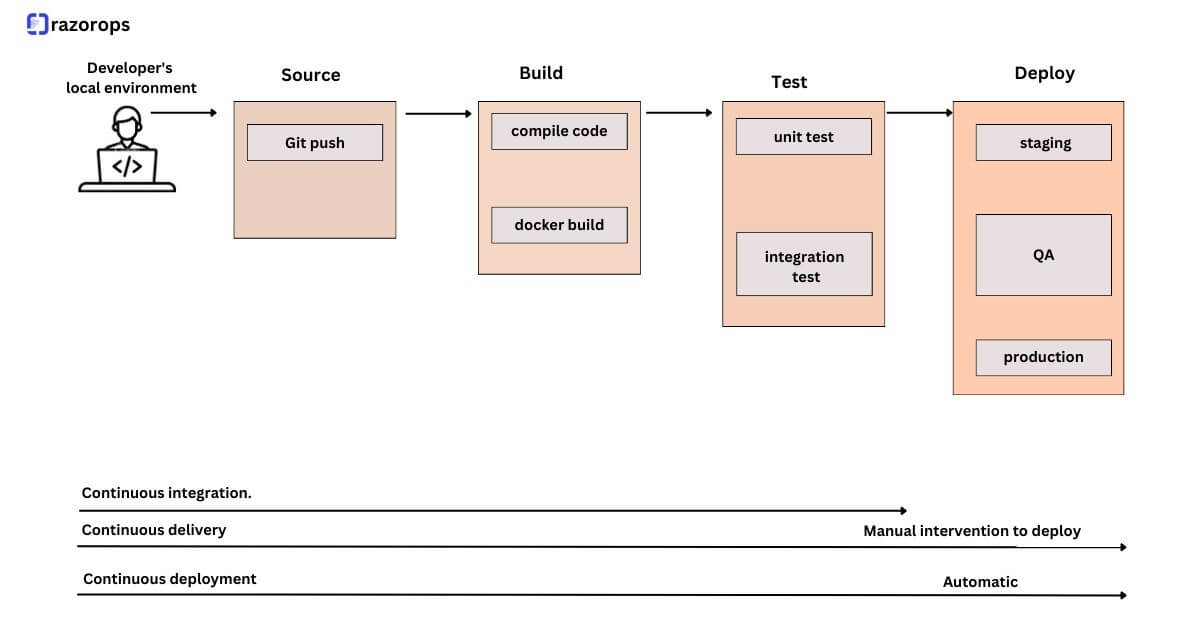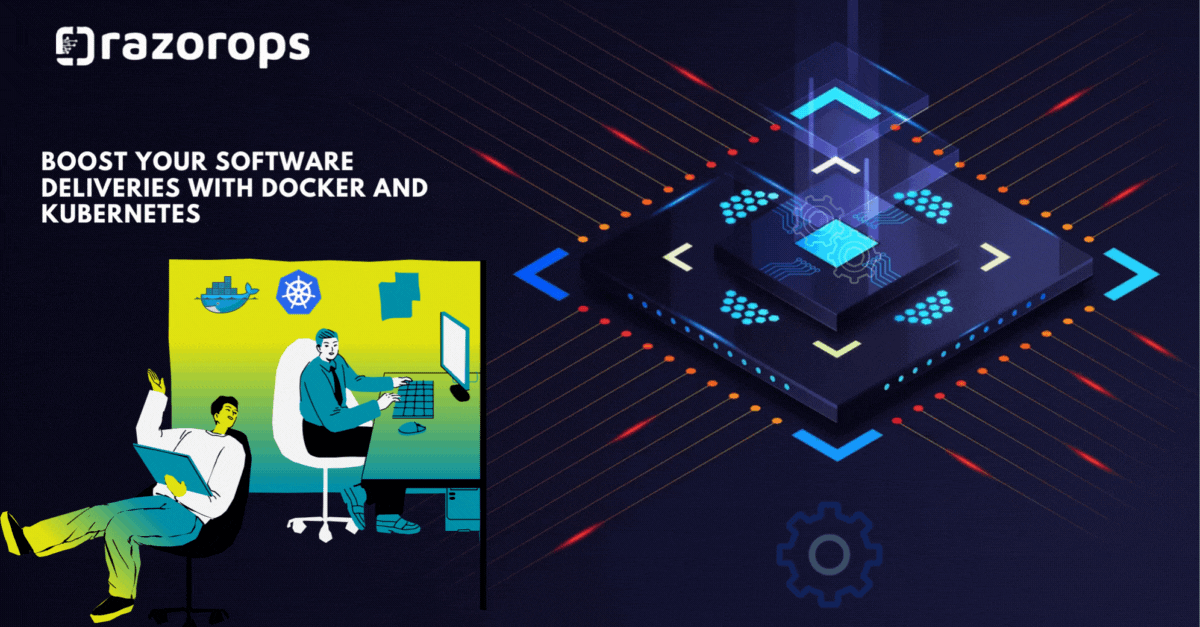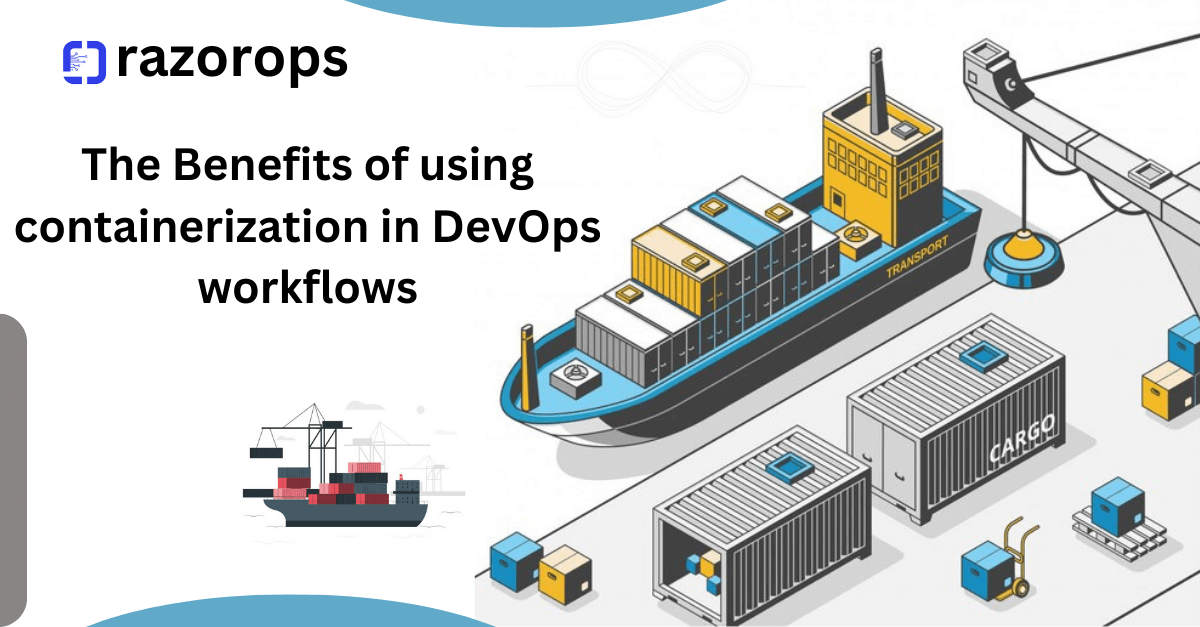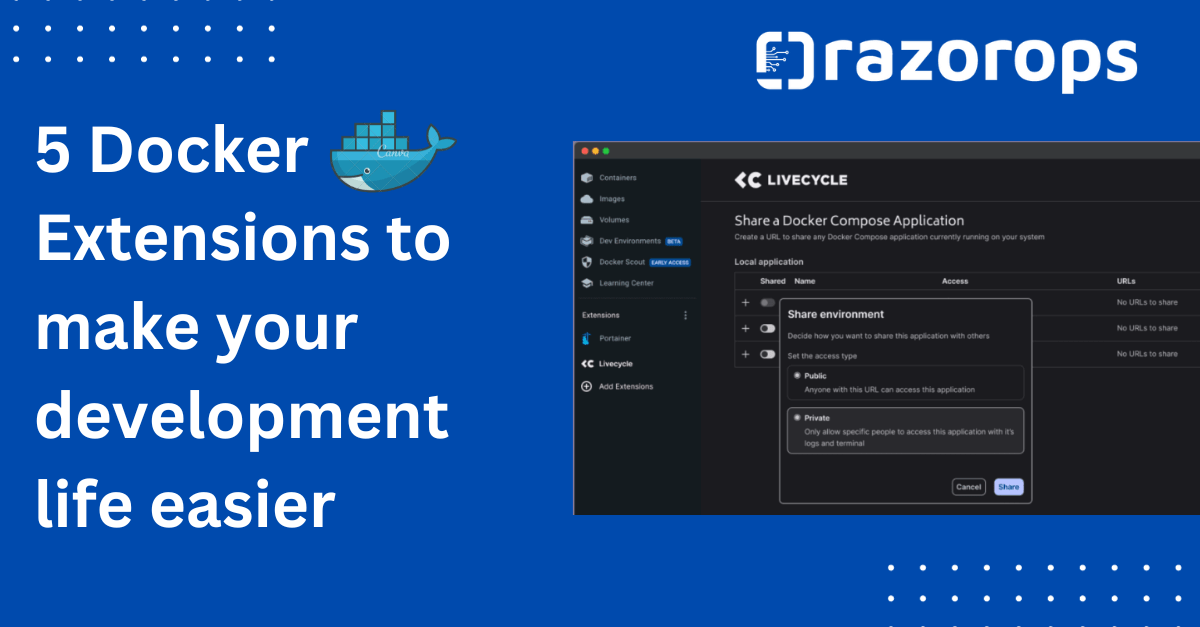Key Principles of Successful DevOps Implementation
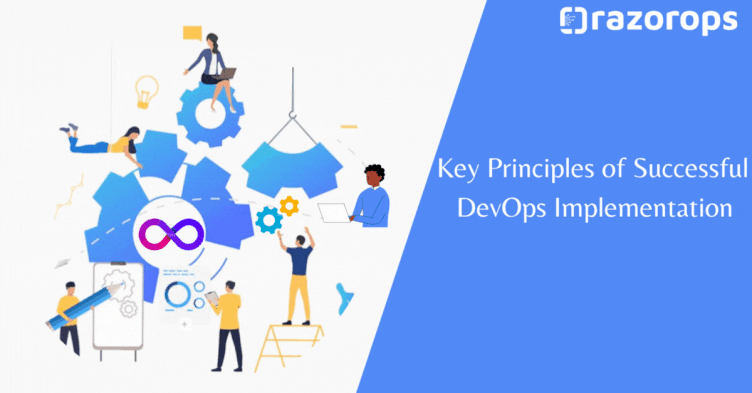
Software development, DevOps has emerged as a game-changer. It’s not just a buzzword; it’s a cultural and technological shift that allows organizations to accelerate their software delivery while maintaining high quality and reliability. However, successful DevOps implementation is not merely about adopting a set of tools or following a predefined set of rules. It’s a holistic approach that requires a deep understanding of key principles. In this blog, we’ll explore the essential principles that underpin a successful DevOps implementation.
Collaboration and Communication
DevOps is all about breaking down the silos that often exist between development and operations teams. Successful DevOps implementation fosters a culture of collaboration and open communication. Team members should work closely together, sharing knowledge and responsibility. Cross-functional teams, regular stand-up meetings, and clear communication channels are essential to ensure that everyone is on the same page.
Automation
Automation is at the heart of DevOps. It helps reduce manual errors, accelerates the development pipeline, and ensures consistency. From code integration and testing to deployment and infrastructure provisioning, automation should be applied wherever possible. Tools like Jenkins, Ansible, and Docker are often used to automate various aspects of the DevOps pipeline.
Continuous Integration (CI)
Continuous Integration is a fundamental DevOps practice where developers frequently integrate their code into a shared repository. Automated tests are run to ensure that the code doesn’t break existing functionality. This principle reduces integration issues and allows for faster and more reliable development.
Continuous Delivery (CD)
Continuous Delivery extends the CI principle by ensuring that code is always in a deployable state. Automated deployment pipelines are established, allowing for rapid and risk-free releases. CD practices make it possible to push new features and bug fixes into production quickly and efficiently.
Infrastructure as Code (IaC)
IaC is about managing infrastructure (servers, databases, networking) using code. This principle allows for the provisioning and configuration of infrastructure to be automated and versioned, just like software code. Tools like Terraform and AWS CloudFormation enable the creation of infrastructure templates that can be deployed consistently and reproducibly.
Monitoring and Feedback
Continuous monitoring and feedback loops are vital for improving DevOps processes. Collecting data on application performance, infrastructure health, and user experience allows for quick identification of issues and opportunities for improvement. Tools like Prometheus, Grafana, and ELK Stack are commonly used for monitoring and log analysis.
Security (DevSecOps)
Incorporating security into the DevOps pipeline is crucial in today’s threat landscape. Security should not be an afterthought but an integral part of the development and deployment process. Implement security checks and scanning tools into the CI/CD pipeline to identify and address vulnerabilities early in the software development lifecycle.
Scalability and Flexibility
A successful DevOps implementation should be scalable and adaptable to changing requirements. Ensure that your infrastructure and pipeline can grow and shrink as needed. Embrace microservices and containerization to enhance flexibility and scalability.
Security as a Priority
In the modern digital landscape, security is paramount. Embed security into the DevOps process from the beginning rather than bolting it on as an afterthought. Implement security best practices, conduct regular security audits, and prioritize the protection of your systems and data.
Scalability and Resilience
Build systems that can scale easily to handle increased workloads and are resilient enough to withstand failures. DevOps should help you create systems that are not just reliable but adaptable to changing demands.
Culture of Continuous Improvement
DevOps is an ongoing journey, not a one-time project. Encourage a culture of continuous improvement where teams regularly reflect on their processes and identify areas for enhancement. This might involve retrospectives, post-mortems, and the implementation of best practices from the DevOps community.
Measure and Optimize
DevOps is a continuous improvement process. Regularly measure key performance indicators (KPIs) and use these metrics to optimize processes. Identifying areas for improvement and acting on them is crucial for ongoing success.
A successful DevOps implementation is a journey, not a destination. It requires commitment, collaboration, and a continuous drive to enhance processes. By embracing these key principles, organizations can build a culture of innovation, agility, and efficiency that will ultimately drive success in an increasingly competitive digital landscape. Whether you’re just starting your DevOps journey or looking to fine-tune existing practices, remember that DevOps is not just a set of practices; it’s a mindset that empowers organizations to thrive in a rapidly changing world. Follow RazorOps Linkedin Page Razorops, Inc.


